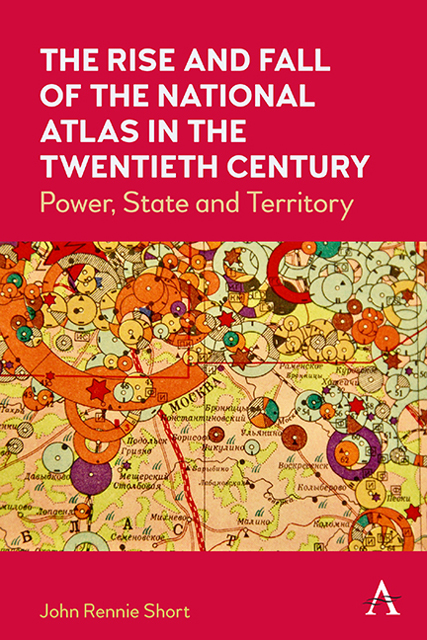Book contents
- Frontmatter
- Contents
- List of Figures
- List of Tables
- Acknowledgments
- 1 Introduction
- 2 The Early National Atlas
- 3 Cartographic Anxieties and the Emergence of the Modern National Atlas
- 4 Cartographic Ruptures and the National Atlas
- 5 National Atlas, Global Discourses
- 6 The Physical World of the National Atlas
- 7 The Social World of the National Atlas
- 8 The End of the National Atlas?
- Notes
- Appendix: National Atlas Bibliography
- Index
3 - Cartographic Anxieties and the Emergence of the Modern National Atlas
Published online by Cambridge University Press: 09 December 2022
- Frontmatter
- Contents
- List of Figures
- List of Tables
- Acknowledgments
- 1 Introduction
- 2 The Early National Atlas
- 3 Cartographic Anxieties and the Emergence of the Modern National Atlas
- 4 Cartographic Ruptures and the National Atlas
- 5 National Atlas, Global Discourses
- 6 The Physical World of the National Atlas
- 7 The Social World of the National Atlas
- 8 The End of the National Atlas?
- Notes
- Appendix: National Atlas Bibliography
- Index
Summary
What we would now recognize as the modern national atlas first begins to appear in the nineteenth century. In the early and mid-nineteenth century, the national atlas emerges as part of the creation of new nation-states. It was used to create a cartographic panopticon that informed the elites, to attract global investment, to generate a national cartographic literacy and to legitimize the new nation-state. Later, the national atlas came to fully flower in the twentieth century with mass education and literacy, cheaper printing and a greater need to legitimize popular support. The modern national atlas began and remains a tool of surveillance but, as the twentieth century progressed, developed into an important element in the state's ideological apparatus.
States rarely emerge fully formed. Instead, states often arise from a liminal space of boundary uncertainty, which gives rise to a cartographic anxiety which we can define as a fear for the integrity of the body politic of the state and the stability of the geo-body of the nation. It is expressed by national maps that seek to reaffirm the security and indeed the inviolate nature of national boundaries. The term was first employed by Sankaran Krishna who used it in reference to postcolonial society in general and to India in particular. Cartographic anxiety is most acute in the definition of boundaries—both the physical and the social—in postcolonial societies, emerging from territorial ambiguity and boundary uncertainty. I will discuss three examples of national atlases marked by the cartographic anxiety of a postcolonial Latin America.
The Modern National Atlas in Latin America
National atlases often emerge as part of the creation of new nation-states. Several atlases prefigure the 1899 Atlas öfver Finland. In South America, local Spanish-speaking elites resisted and finally overthrew Spanish domination As part of their new national identity, intellectual elites worked to create a national atlas that not only would reflect and embody rising nationalist sentiment but that also would function as a scientific document to link the new nation to the global Enlightenment project. The national atlas became an integral part of the Enlightenment project that shared the Humboldtian vision of understanding and representing the world in a discourse of rational thought and precise measurement. Produced at a time before mass literacy, these proto-modern atlases were limited to an elite readership and so played little role in the creation of widespread national identity.
- Type
- Chapter
- Information
- The Rise and Fall of the National Atlas in the Twentieth CenturyPower, State and Territory, pp. 17 - 30Publisher: Anthem PressPrint publication year: 2022

